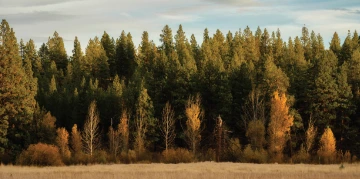
Researchers at the University of Arizona Laboratory of Tree-Ring Research found that rising temperatures are stunting tree growth, a phenomenon with troubling implications for global warming and climate resilience planning.
Forests remove carbon dioxide (CO2) – the major driver of global warming – from the air, helping to reduce its accumulation in the atmosphere. The study used a first-ever fusion of data from tree rings and the U.S. Forest Service census: surveys every 10 years of a forest’s soil quality, its number of trees and tree diameters. The resulting model forecasts that Arizona’s ponderosa pine forests will see tree growth declines of 56% to 91%.
Higher temperatures stress trees’ water transport systems, especially in taller trees, decreasing growth and increasing vulnerability to drought. The study also found that trees in overly dense stands have a stronger negative response to heat. Thinning in those areas and revising fire suppression policies could help alleviate overall
forest stress.
Because smaller trees have less capacity for CO2 uptake, the study signals yet another setback in the fight against global warming. Modeling suggests that forests in warming areas around the world can also expect growth declines.
